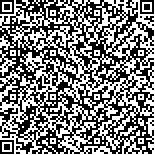
码上扫一扫!
基于卷积神经网络的图像验证码识别
秦波1,2,3,
顾乃杰1,2,3,
张孝慈1,2,3,
林传文1,2,3
(1.中国科学技术大学 计算机科学与技术学院 网络计算与高效算法实验室, 合肥 230027;2.
安徽省计算与通信软件重点实验室, 合肥 230027;3.
中国科学技术大学 先进技术研究院, 合肥 230027)
Image CAPTCHA Recognition Based on Convolutional Neural Network
QIN Bo1,2,3,
GU Nai-Jie1,2,3,
ZHANG Xiao-Ci1,2,3,
LIN Chuan-Wen1,2,3
(1.Laboratory of Network Computing and High Efficient Algorithm, School of Computer Science and Technology, University of Science and Technology of China, Hefei 230027, China;2.
Anhui Provincial Key Laboratory of Computing and Communication Software, Hefei 230027, China;3.
Institute of Advanced Technology, University of Science and Technology of China, Hefei 230027, China)
本文已被:浏览 1956次 下载 2084次
Received:April 02, 2018 Revised:May 11, 2018
中文摘要: 验证码作为一种安全手段,被广泛应用于互联网领域.本文提出了一种基于卷积神经网络的图像验证码识别方法,通过卷积层级联、残差学习、全局池化、分组卷积等技术手段,在保证识别准确率不受影响的前提下,大大降低了网络的参数量.本文以铁路购票网站验证码和正方教务系统验证码为例来测试模型性能.对于铁路购票网站验证码,实验结果显示本文提出的识别方法参数量最少,对图形和中文词组验证码的识别准确率分别达到98.76%和99.14%;对于正方教务系统验证码,本文方法参数量最少且识别准确率为87.30%.
Abstract:As a security measure, CAPTCHA is widely used in Internet. This study proposes a CAPTCHA identification method based on convolutional neural network. Through convolutional layer concatenation, residual learning, global pool, and other technical means, under the premise of ensuring the recognition accuracy rate is not affected, it greatly reduces the amount of network parameters. This study uses the CAPTCHA in the railway ticket website and the CAPTCHA in the educational system as examples to test the performance of the model. For the CAPTCHA in railway ticket website, the experimental results show that this method has the least amount of parameters, and the recognition accuracy of this method is 98.76% for image and the recognition accuracy of the Chinese phrases is 99.14%. For the CAPTCHA in educational system, it has the least amount of parameters and the accuracy is 87.30%.
文章编号: 中图分类号: 文献标志码:
基金项目:
| Author Name | Affiliation | E-mail |
| QIN Bo | Laboratory of Network Computing and High Efficient Algorithm, School of Computer Science and Technology, University of Science and Technology of China, Hefei 230027, China
Anhui Provincial Key Laboratory of Computing and Communication Software, Hefei 230027, China
Institute of Advanced Technology, University of Science and Technology of China, Hefei 230027, China | |
| GU Nai-Jie | Laboratory of Network Computing and High Efficient Algorithm, School of Computer Science and Technology, University of Science and Technology of China, Hefei 230027, China
Anhui Provincial Key Laboratory of Computing and Communication Software, Hefei 230027, China
Institute of Advanced Technology, University of Science and Technology of China, Hefei 230027, China | gunj@ustc.edu.cn |
| ZHANG Xiao-Ci | Laboratory of Network Computing and High Efficient Algorithm, School of Computer Science and Technology, University of Science and Technology of China, Hefei 230027, China
Anhui Provincial Key Laboratory of Computing and Communication Software, Hefei 230027, China
Institute of Advanced Technology, University of Science and Technology of China, Hefei 230027, China | |
| LIN Chuan-Wen | Laboratory of Network Computing and High Efficient Algorithm, School of Computer Science and Technology, University of Science and Technology of China, Hefei 230027, China
Anhui Provincial Key Laboratory of Computing and Communication Software, Hefei 230027, China
Institute of Advanced Technology, University of Science and Technology of China, Hefei 230027, China | |
| Author Name | Affiliation | E-mail |
| QIN Bo | Laboratory of Network Computing and High Efficient Algorithm, School of Computer Science and Technology, University of Science and Technology of China, Hefei 230027, China
Anhui Provincial Key Laboratory of Computing and Communication Software, Hefei 230027, China
Institute of Advanced Technology, University of Science and Technology of China, Hefei 230027, China | |
| GU Nai-Jie | Laboratory of Network Computing and High Efficient Algorithm, School of Computer Science and Technology, University of Science and Technology of China, Hefei 230027, China
Anhui Provincial Key Laboratory of Computing and Communication Software, Hefei 230027, China
Institute of Advanced Technology, University of Science and Technology of China, Hefei 230027, China | gunj@ustc.edu.cn |
| ZHANG Xiao-Ci | Laboratory of Network Computing and High Efficient Algorithm, School of Computer Science and Technology, University of Science and Technology of China, Hefei 230027, China
Anhui Provincial Key Laboratory of Computing and Communication Software, Hefei 230027, China
Institute of Advanced Technology, University of Science and Technology of China, Hefei 230027, China | |
| LIN Chuan-Wen | Laboratory of Network Computing and High Efficient Algorithm, School of Computer Science and Technology, University of Science and Technology of China, Hefei 230027, China
Anhui Provincial Key Laboratory of Computing and Communication Software, Hefei 230027, China
Institute of Advanced Technology, University of Science and Technology of China, Hefei 230027, China | |
引用文本:
秦波,顾乃杰,张孝慈,林传文.基于卷积神经网络的图像验证码识别.计算机系统应用,2018,27(11):142-148
QIN Bo,GU Nai-Jie,ZHANG Xiao-Ci,LIN Chuan-Wen.Image CAPTCHA Recognition Based on Convolutional Neural Network.COMPUTER SYSTEMS APPLICATIONS,2018,27(11):142-148
![]()


